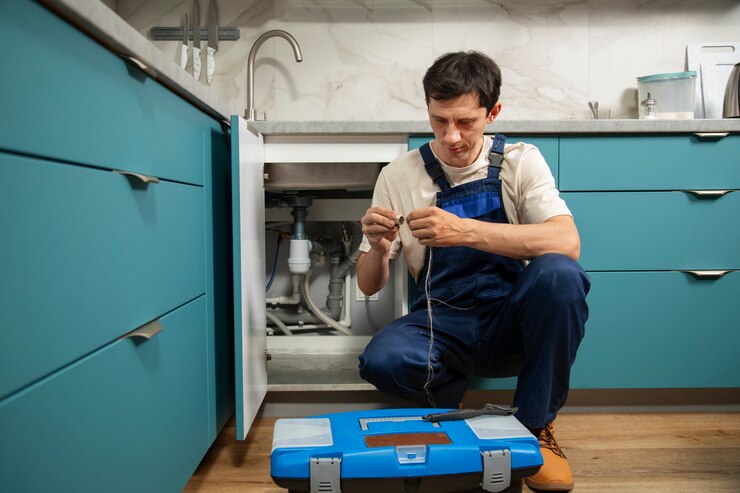Introduction
Creating a comfortable and functional home or office relies heavily on the quality of its sanitary fixtures. Whether you’re upgrading an old space or outfitting a new one, understanding the installation and maintenance of sanitary fixtures is crucial for longevity and efficiency.
This ultimate guide to installing and maintaining sanitary fixtures offers step-by-step instructions, tips, and insights to help you ensure a hassle-free experience. From selecting the right fixtures to maintaining their pristine condition, this guide has you covered.
What Are Sanitary Fixtures?
Sanitary fixtures refer to devices in buildings that facilitate water flow for hygiene purposes. Common examples include:
- Toilets: Essential for waste disposal.
- Sinks: Used for handwashing, dishwashing, and other cleaning tasks.
- Showers and Bathtubs: Provide bathing facilities.
- Bidets: Enhance personal hygiene.
These fixtures are indispensable for maintaining health and hygiene, making their correct installation and upkeep non-negotiable.
Why Is Proper Installation Important?
Proper installation of sanitary fixtures ensures:
- Functionality: Improperly installed fixtures may leak or not work efficiently.
- Durability: Correctly installed fixtures last longer and withstand daily wear and tear.
- Hygiene: Faulty fixtures can lead to unsanitary conditions.
- Cost Efficiency: Avoid costly repairs or replacements caused by poor installation.
Step-by-Step Guide to Installing Sanitary Fixtures
1. Choosing the Right Fixtures
- Assess Needs: Determine the primary usage and volume of water needed.
- Consider Material: Opt for materials like porcelain, stainless steel, or acrylic based on durability and style preferences.
- Energy and Water Efficiency: Look for fixtures with water-saving features like dual-flush toilets or low-flow faucets.
- Compatibility: Ensure compatibility with existing plumbing systems.
2. Pre-Installation Preparations
- Inspect Plumbing: Verify that the plumbing is functional and meets local building codes.
- Gather Tools: Common tools include a wrench, pliers, sealant, and tape measure.
- Read Manufacturer Instructions: Familiarize yourself with installation manuals.
- Turn Off Water Supply: Shut off the main water valve to avoid accidental leaks.
3. Installing Common Fixtures
Installing a Sink
- Position the sink on the countertop or wall.
- Connect the faucet and attach water supply lines.
- Secure the drain assembly with plumber’s putty.
- Tighten mounting hardware and ensure stability.
- Turn on the water supply to test functionality.
Installing a Toilet
- Place the wax ring on the toilet flange.
- Position the toilet bowl over the flange and press firmly.
- Secure bolts and attach the tank to the bowl.
- Connect the water supply and test for leaks.
Installing a Showerhead
- Wrap Teflon tape around the shower arm threads.
- Screw on the showerhead and tighten using pliers.
- Turn on the water to check for leaks.
4. Final Checks and Testing
- Check for leaks at all connections.
- Ensure water pressure is adequate.
- Inspect for proper drainage.
Tips for Maintaining Sanitary Fixtures
1. Cleaning Techniques
- Sinks and Faucets: Use non-abrasive cleaners to avoid scratches.
- Toilets: Clean weekly with a toilet brush and disinfectant.
- Showers: Prevent soap scum buildup with vinegar-based solutions.
- Drains: Use a drain cleaner periodically to avoid clogs.
2. Preventing Common Issues
- Leaks: Regularly check for loose connections and worn-out seals.
- Clogs: Avoid flushing non-biodegradable items and use strainers in sinks.
- Corrosion: Inspect metal parts and apply anti-corrosion sprays.
3. Seasonal Maintenance Checklist
- Winter: Insulate exposed pipes to prevent freezing.
- Spring: Check for leaks caused by expanding pipes.
- Summer: Clean water lines to remove mineral buildup.
- Autumn: Inspect outdoor fixtures before shutting them off.
Common Installation and Maintenance Mistakes to Avoid
- Skipping the Manufacturer’s Instructions: Leads to improper installation.
- Using Incorrect Tools: Damages fixtures or results in loose connections.
- Ignoring Leaks: Causes water damage over time.
- Neglecting Regular Cleaning: Shortens fixture lifespan.
FAQs About Sanitary Fixtures
Q1: How often should I clean my fixtures?
A: Weekly cleaning is recommended to maintain hygiene and functionality.
Q2: What’s the lifespan of sanitary fixtures?
A: With proper maintenance, most fixtures last 10-20 years.
Q3: Can I install fixtures myself?
A: DIY installation is possible for simple fixtures. For complex setups, consult a professional.
Q4: How do I choose water-efficient fixtures?
A: Look for labels like WaterSense or check for features like dual-flush mechanisms.
Conclusion
Mastering the installation and maintenance of sanitary fixtures not only improves their performance but also extends their lifespan. By following this guide, you’ll ensure that your fixtures remain in top condition while enhancing the overall hygiene and comfort of your space.
Remember, proper care and attention to detail can make a significant difference. If you need professional assistance, don’t hesitate to contact experts to get the job done right.
